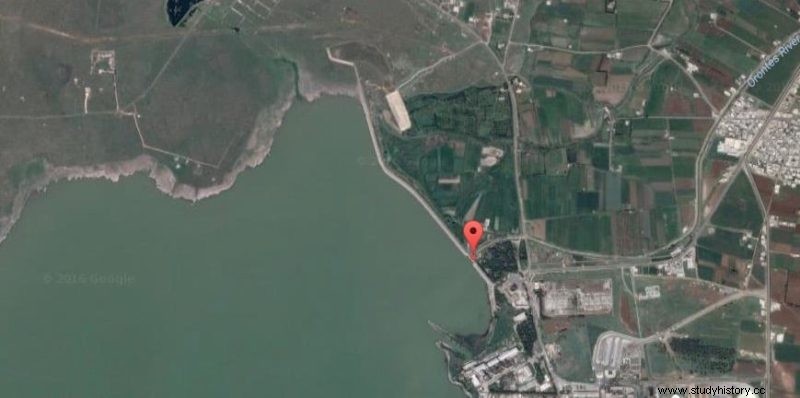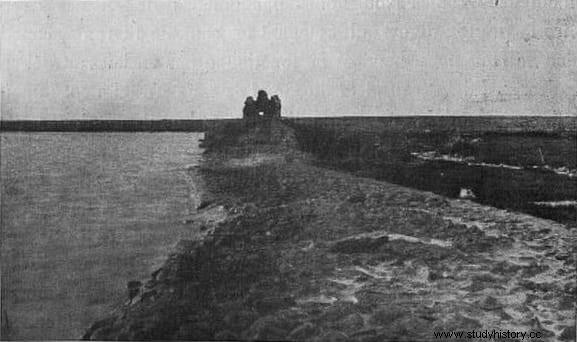There is a rabbinical current that can be traced in some versions of the Talmud that mentions an eighth sea, in addition to the seven that are traditionally cited as surrounding the land of Israel:the Great (Mediterranean) Sea, the Sea of Tiberias, the Sea of Kub, the Sea of Salt (Dead Sea), the Sea of Helath, the Sea of Shilhath and the Sea of Apamea. The eighth is the Sea of Homs , and in these versions of the Talmud it always appears as a question and not as an affirmation. Because Talmudic scholars weren't entirely sure whether it should be included in the list or not.

The answer is probably no, if that sea of Homs corresponds to the current Lake of Homs that exists in Syria. Lake Homs (also called Lake Qattinah) is an artificial lake located about 12 kilometers southwest of the city of the same name, whose creation is attributed to Diocletian. It has about 60 square kilometers of surface, and was formed by the construction of a dam on the Orontes (al-Asi) river.
Some historians have wanted to link its origins with Pharaoh Seti (1319-1304 BC). Local oral traditions link her to historical figures such as Alexander the Great, Queen Zenobia of Tadmor or the Queen of Sheba. However, the current opinion of archaeologists agrees with the Talmudic tradition in that the structure of the dam dates from the period of Diocletian (284-305 AD). Although there is no evidence of this, what does seem clear is that the construction system is the typical one used by the Romans of that time, as the investigations carried out at the end of the 19th century and the beginning of the 20th concluded. 
The lake was the largest artificial water reserve built up to that time, with a capacity of about 90 million cubic meters, which were mainly used for irrigation. To retain the water, the Romans built a dam 7 meters high and 2 kilometers long, the longest of the Roman dams that are preserved. Its core is from opera caementicia , the famous Roman concrete, and is covered with basalt blocks. It is shaped like an extremely open V, with its apex facing the lake. As for its width, it is irregular, with about 3 meters at the base and only 1.5 meters at its highest point in the east, which widens until it reaches 14-20 meters at the base and 6 at the top. the upper central part, to reduce later as it continues west.
Between 1934 and 1938 the French raised its height, building on the old Roman dam, which helped preserve the old factory while increasing the capacity of the lake to 200 million cubic meters.

We have not been able to find current images of the dam, probably due to the state of war that the area has been experiencing within the Syrian conflict for several years. On some sites, photographs appear tagged as Homs Dam (Homs dam) but which actually correspond to Roman dams located in other places.
